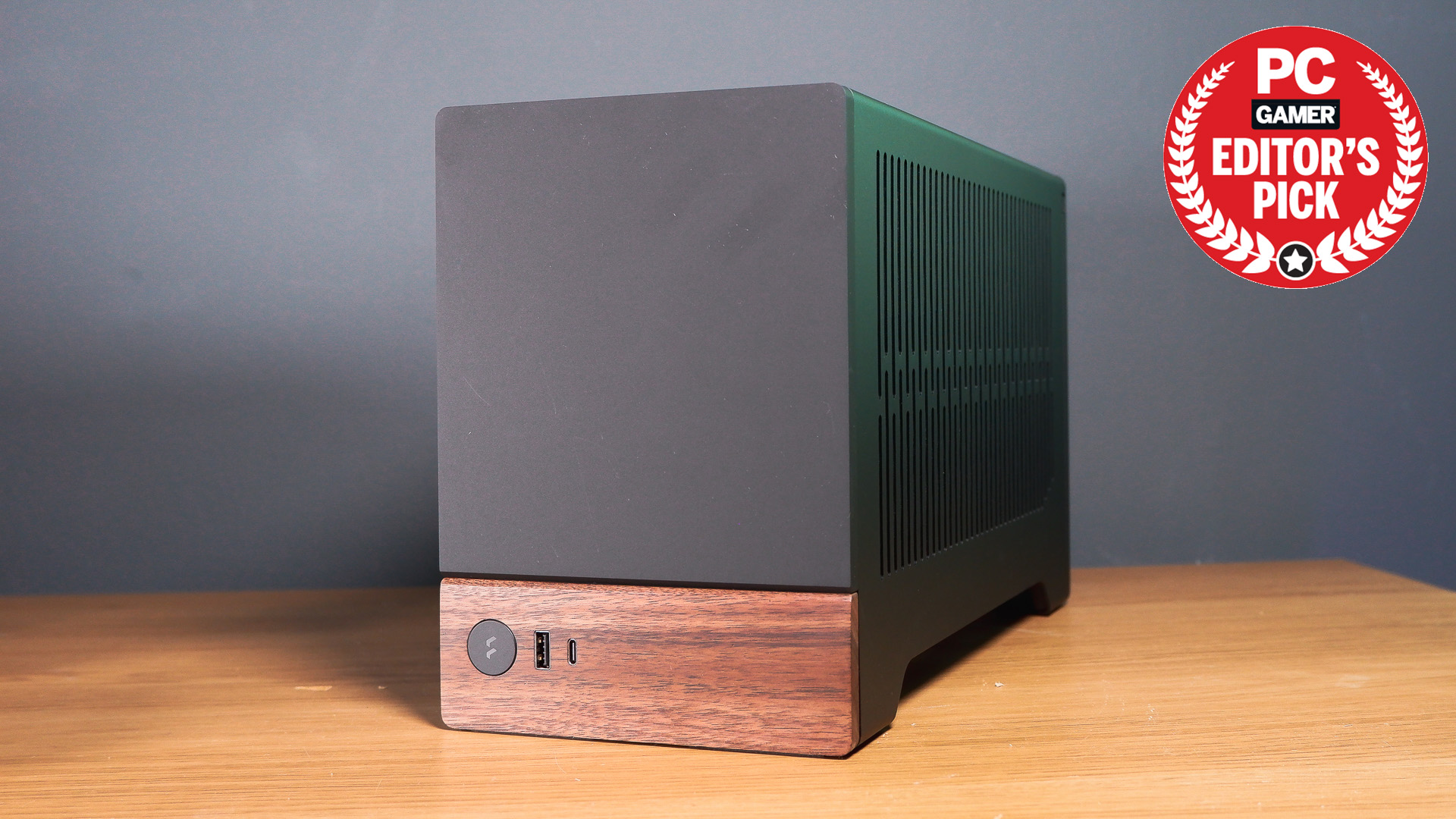
Smaller than a reasonably sized dachshund but accessible as a two-sided bread bin: the Fractal Design Terra is a dream to build with.
The Fractal Design Terra is a compact case measuring 343 x 153 x 218 mm. It can house a Mini-ITX motherboard, SFX PSU, and a graphics card—up to 322 mm in length. There's space for a single 120 mm case fan and two 2.5-inch drives. It's a dual-chamber design with adjustable width, though it's pretty slim for space whichever way it's laid out.
To put those measurements into perspective, it's dwarfed by the largest of my two cats.
To test the Terra, I set out to build a powerful yet compact mini PC powered by an RTX 4070 Super and Ryzen 7 9700X. I was expecting some hiccups, issues, or annoyances when setting out this build. It's a small form factor PC, I thought to myself, I'm destined for a couple cut fingers and mutter at least one curse word under my breathe. Maybe a few choice words, to be truthful.
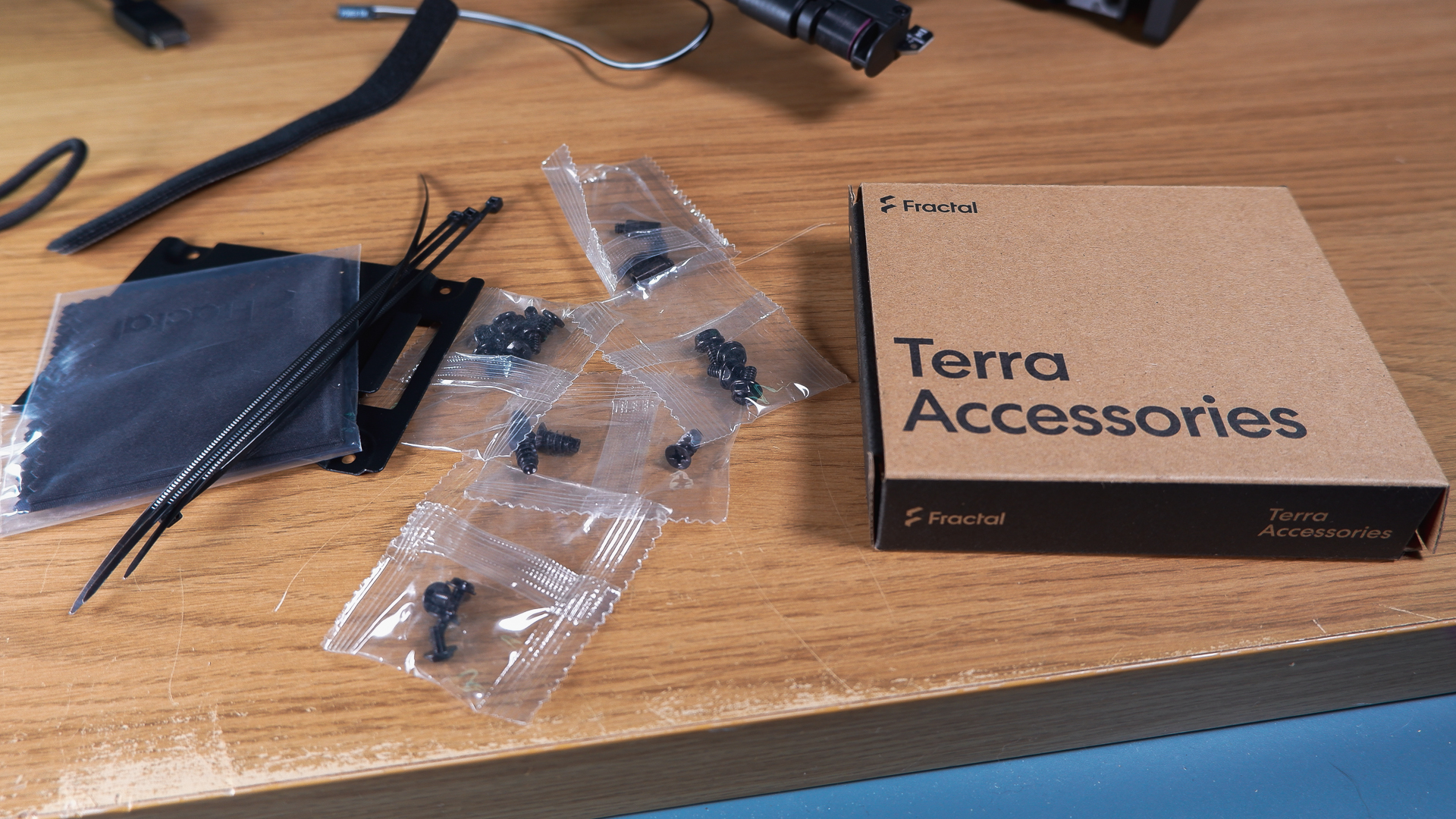
Size: Mini-ITX / Small Form Factor
Dimensions: 343 x 153 x 218 mm
Volume: 10.4-liter
GPU max length: 322 mm
GPU max width: 43 – 72 mm
CPU cooler max height: 48 – 77 mm
Fan support: 1x 120 mm
PSU support: SFX/SFX-L
Front panel: 1x USB 3.2 Gen 2x2 (Type-C), 1x USB 3.0 (Type-A), power
Price: $180 | £175
But the build was a breeze. It came together with next to no issues. The only minor fault I ran into was of my own creation, in trying to stuff the fan on the Noctua NH-L12S on the outside of the heatsink rather than tucked between the cooler and CPU. Optimistic—but the Terra saw to a simple fix.
Besides the (real) wood panel adorning its front panel's lower quarter, the Terra's best feature are its gull-wing doors. That's overselling them—the side panels are hinged. Shifting the side panels up to one side is handy though removing them altogether is even better. That's easily done by just pulling a small locking mechanism on one of the two hinges and levering the panel off. Both panels remove in this way and, with them gone, you can access the innards like a crazed surgeon.
The central motherboard tray and mount for the PSU straddles the centre of the case. It's held in place on a sliding bracket, which can be loosened up very easily with a few screws. This can be shifted forward and backwards by a couple centimeters. You can do this mainly for two reasons: to make way for a bigger GPU or a bigger CPU cooler. With the slimline RTX 4070 Super Founders Edition prepared for this build, I only needed to knock back the tray on the GPU side to make way for the Noctua NH-L12S. That was about the biggest cooler I could fit in this build, too, as there's not much wiggle room. That's why the 9700X was a good choice with a 65 W TDP—anything more might get a bit toasty.
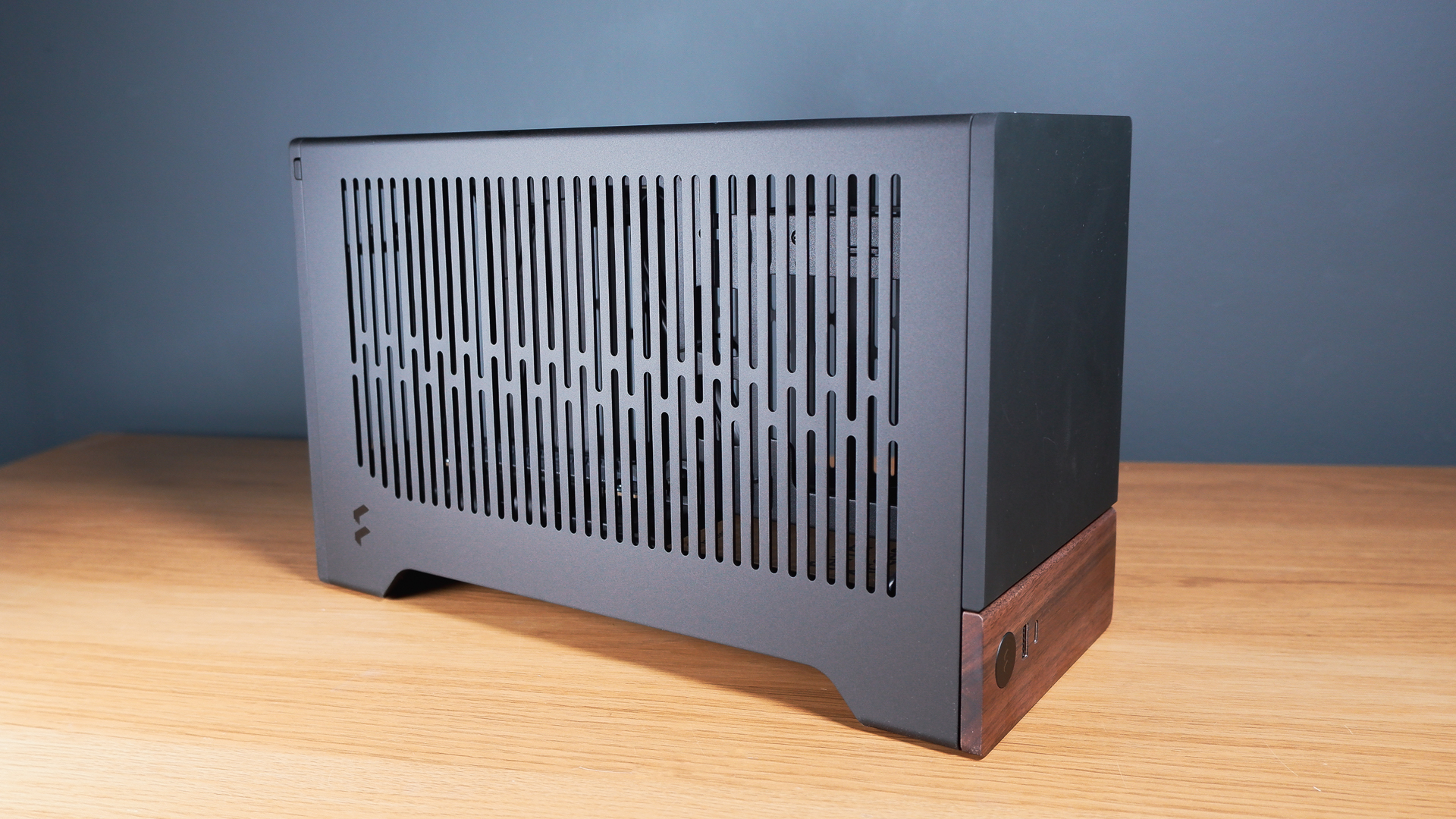
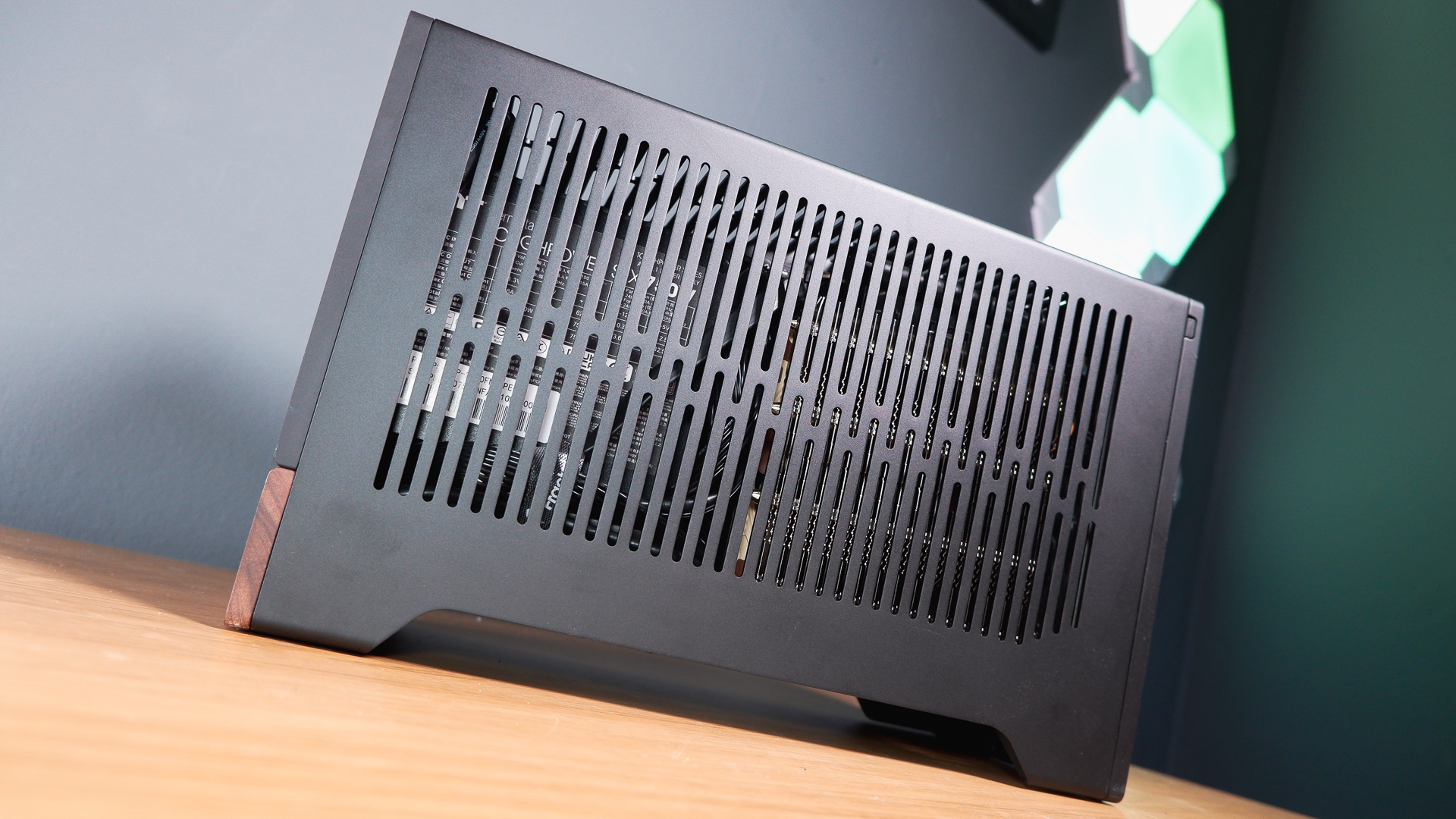
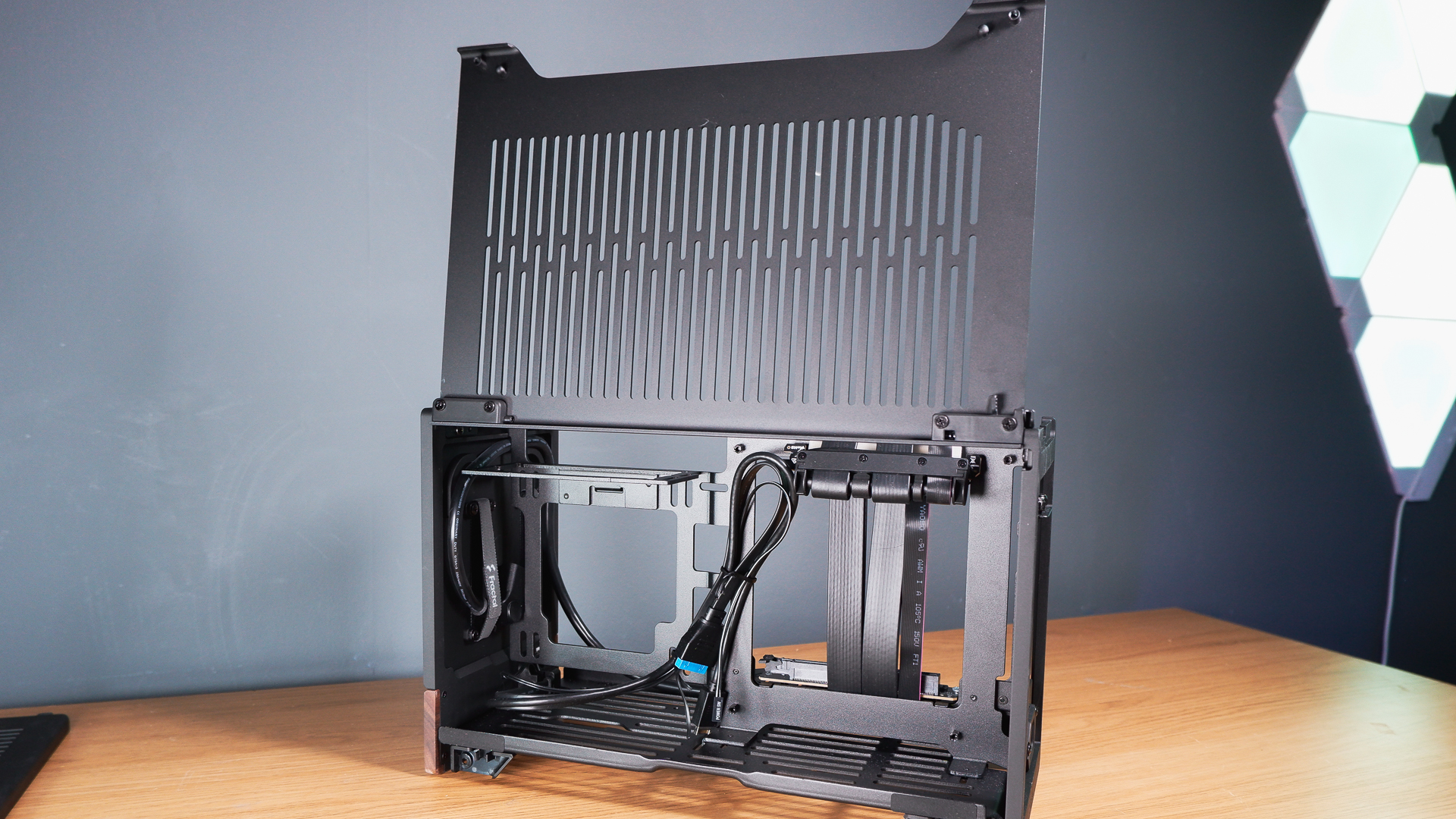
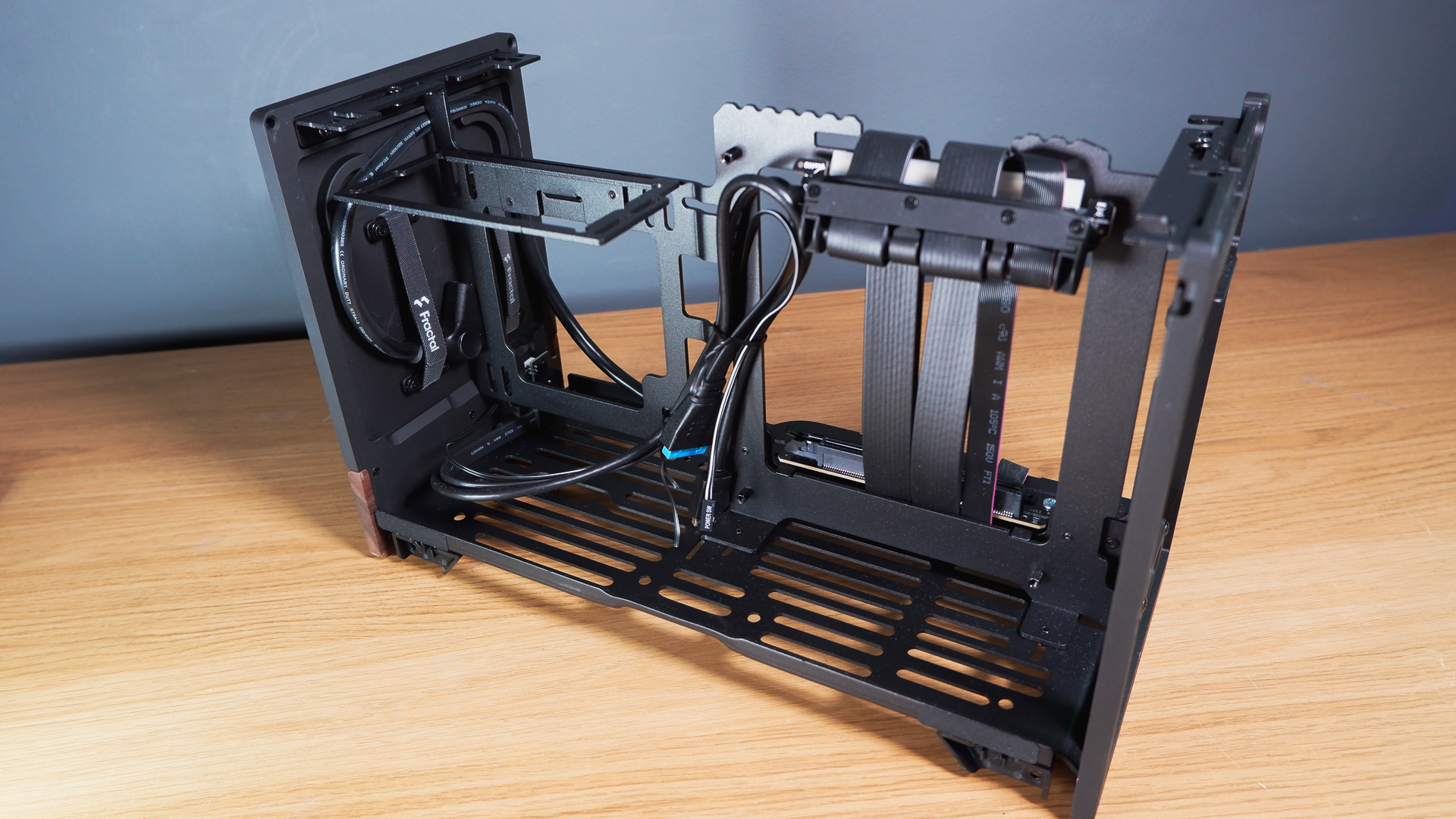
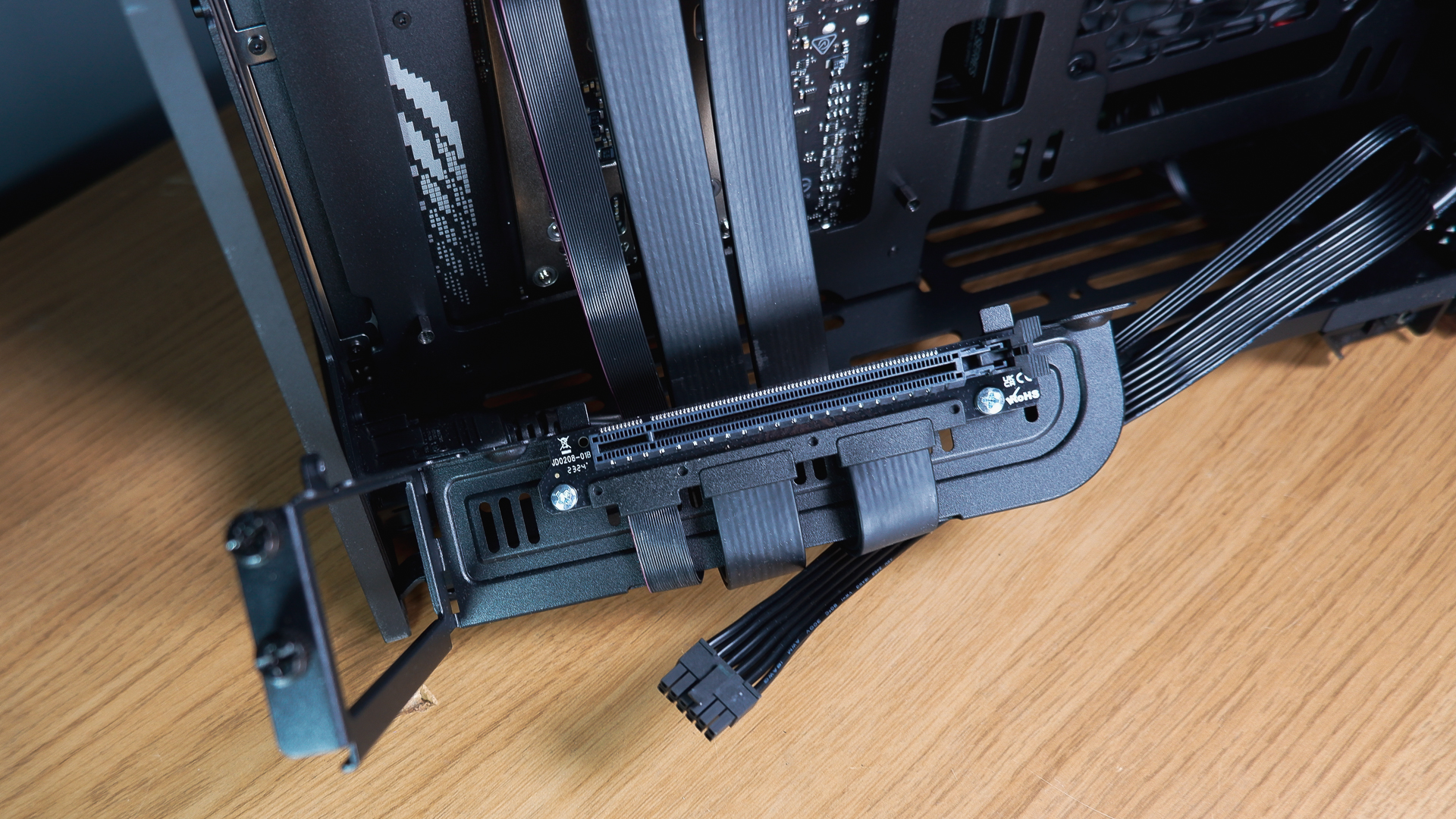
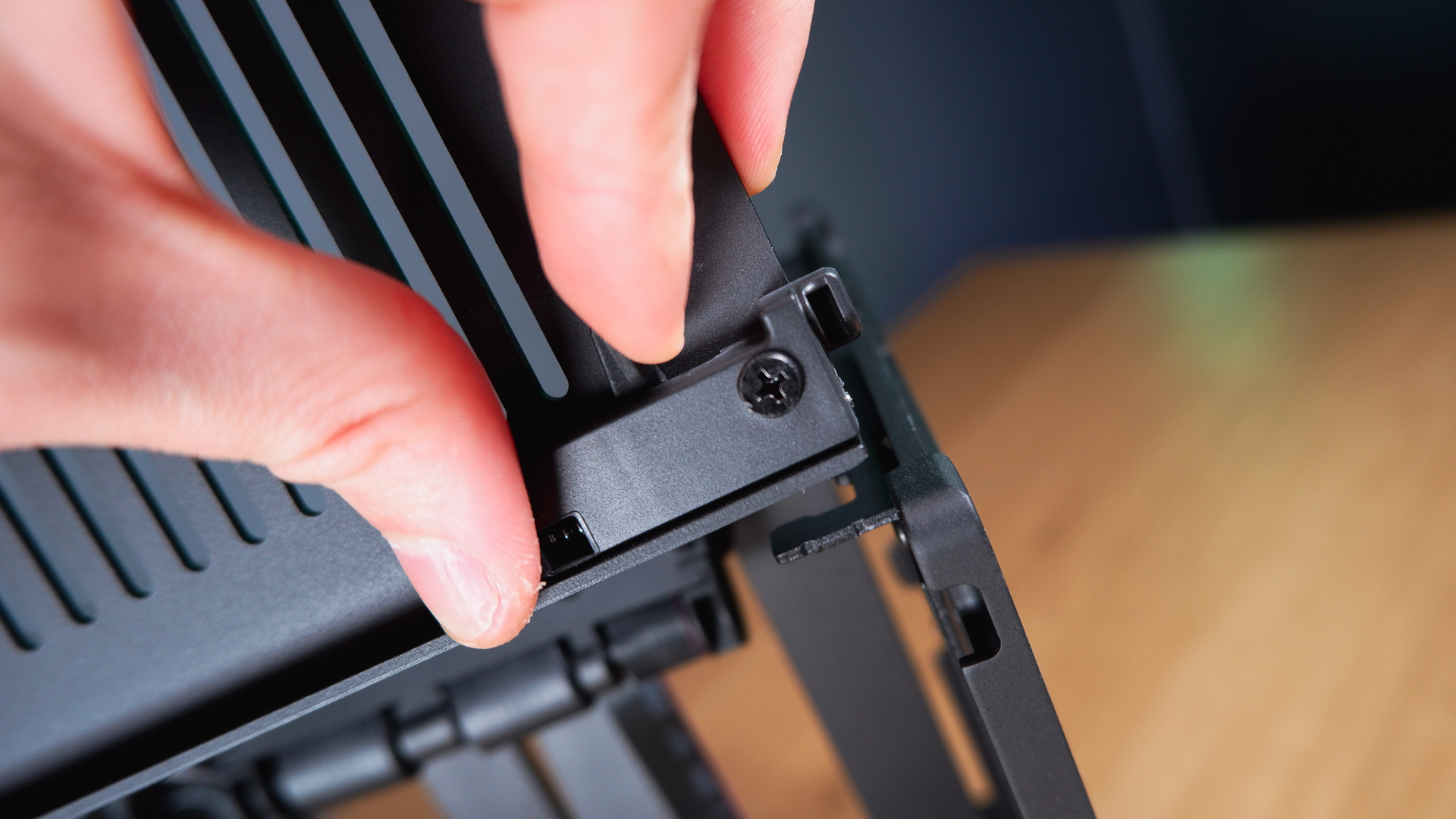
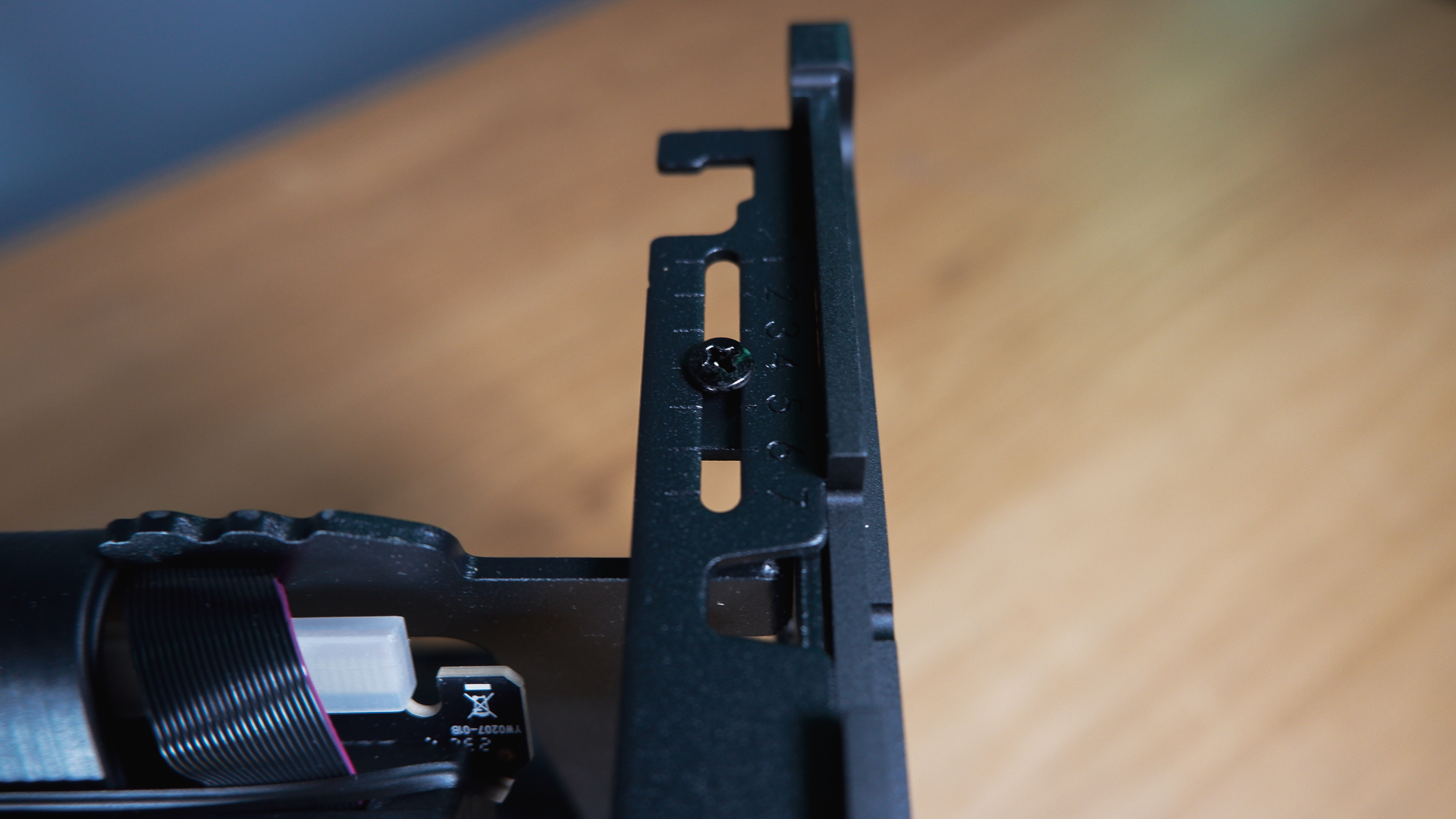
The motherboard is mostly easy to reach for installing cables, though I did struggle to get the CPU power connection in place. So, there's a piece of advice if you're planning your own Terra build: plug in your CPU power cable before you install the motherboard.
The case offers a PSU mounted vertically, which would be a pain to reach if the bracket holding it in place wasn't removable itself. That's done with a couple of tiny screws, which were a bit awkward to reinstall with the PSU fitted.
The power cables have ample but not roomy space to fall out of the unit into the base of the chassis. Right into the firing line of the only space available for a case fan. Fractal provides no mesh or form of protection from cables falling directly into a fan blade at full whack but it needn't have to with a little cable management. Using a modular PSU with freedom to remove unnecessary cables, Thermaltake's Toughpower SFX Platinum 750W, I wrapped the cables firmly out of the way in the little remaining space leftover on the motherboard side of the case. I should note I, rather foolishly, did this and then installed the Noctua NF-A12x25 fan. That was another mistake of my own making, but it worked out after a little push and pull.
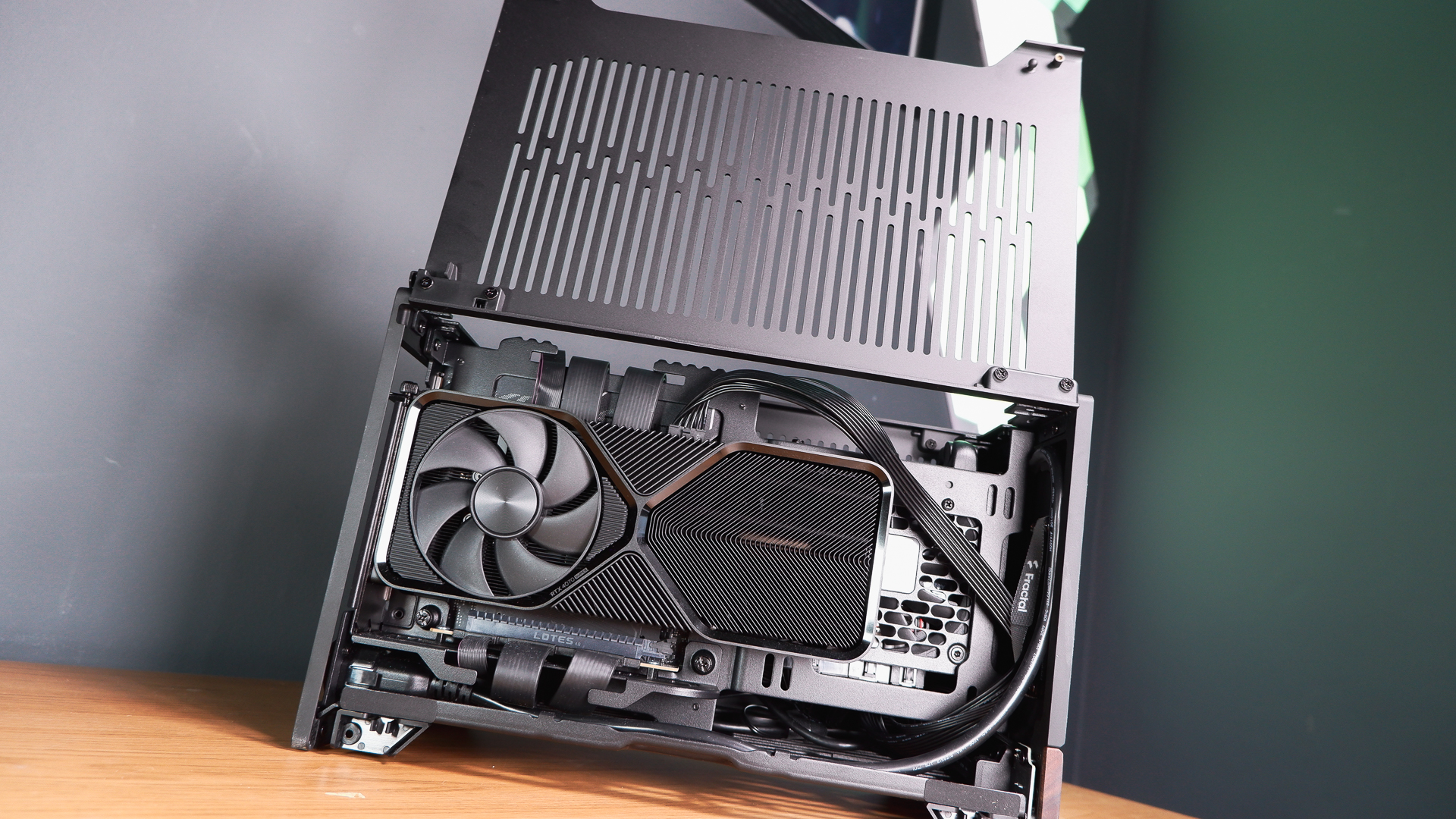
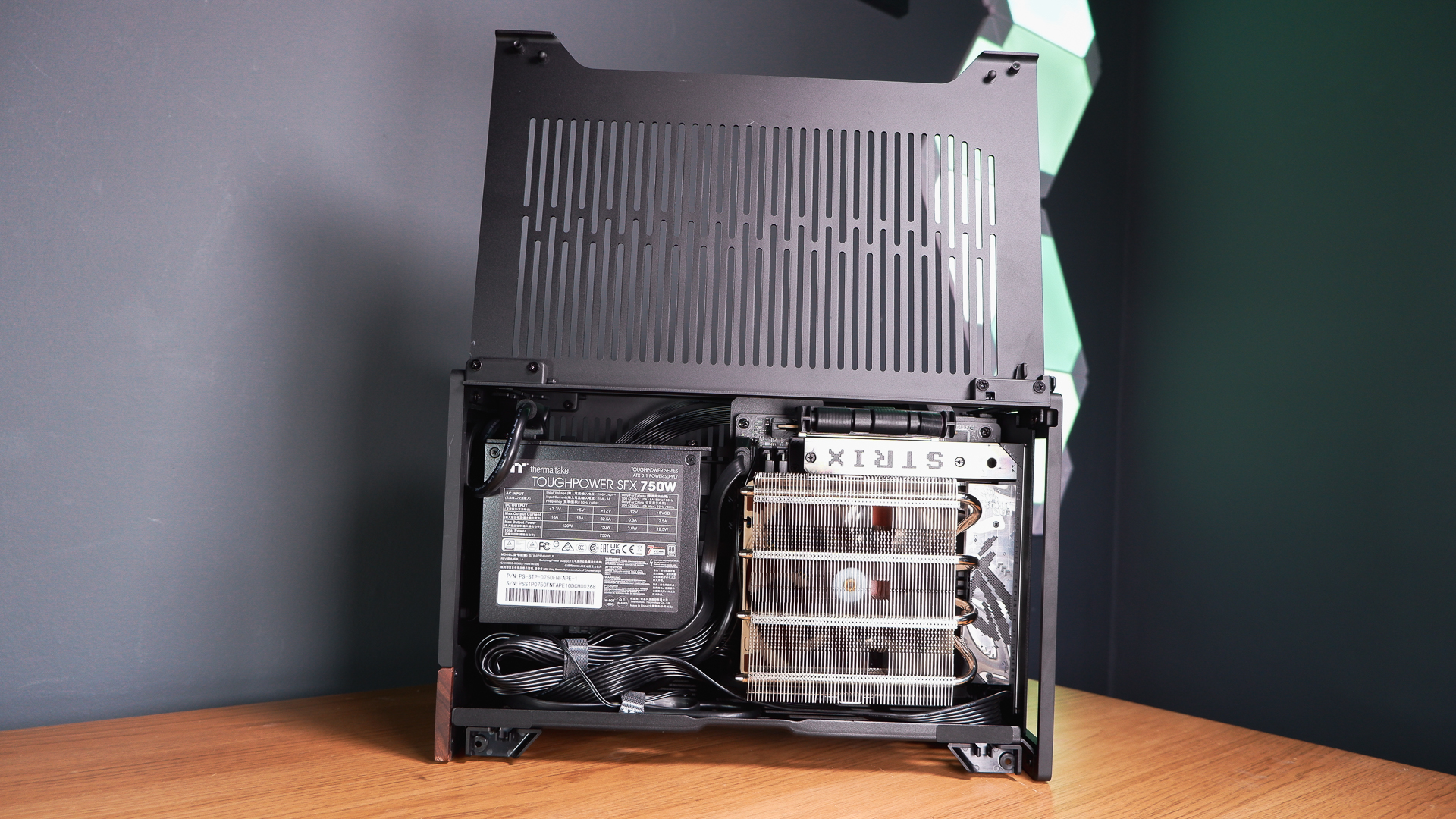
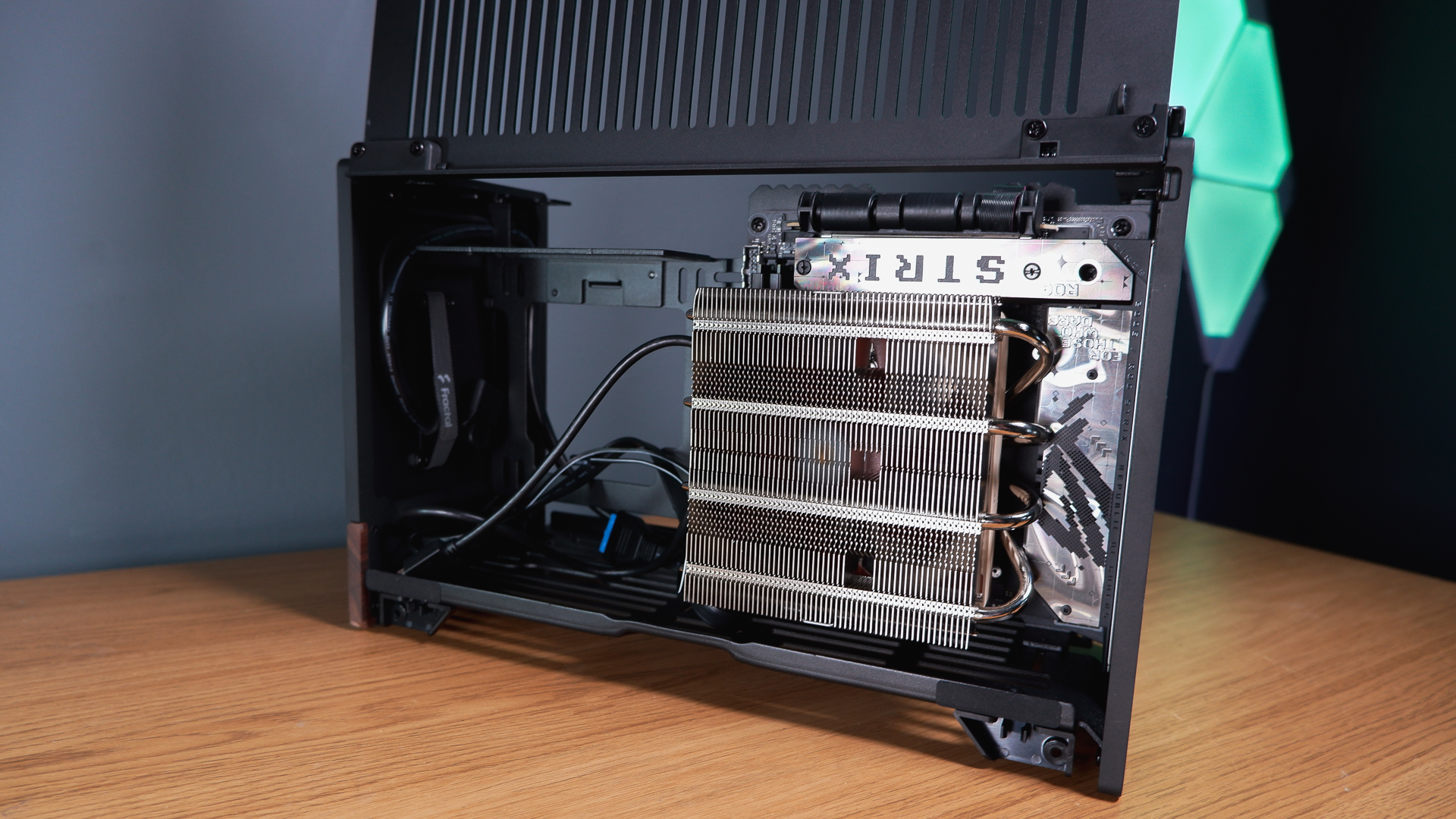
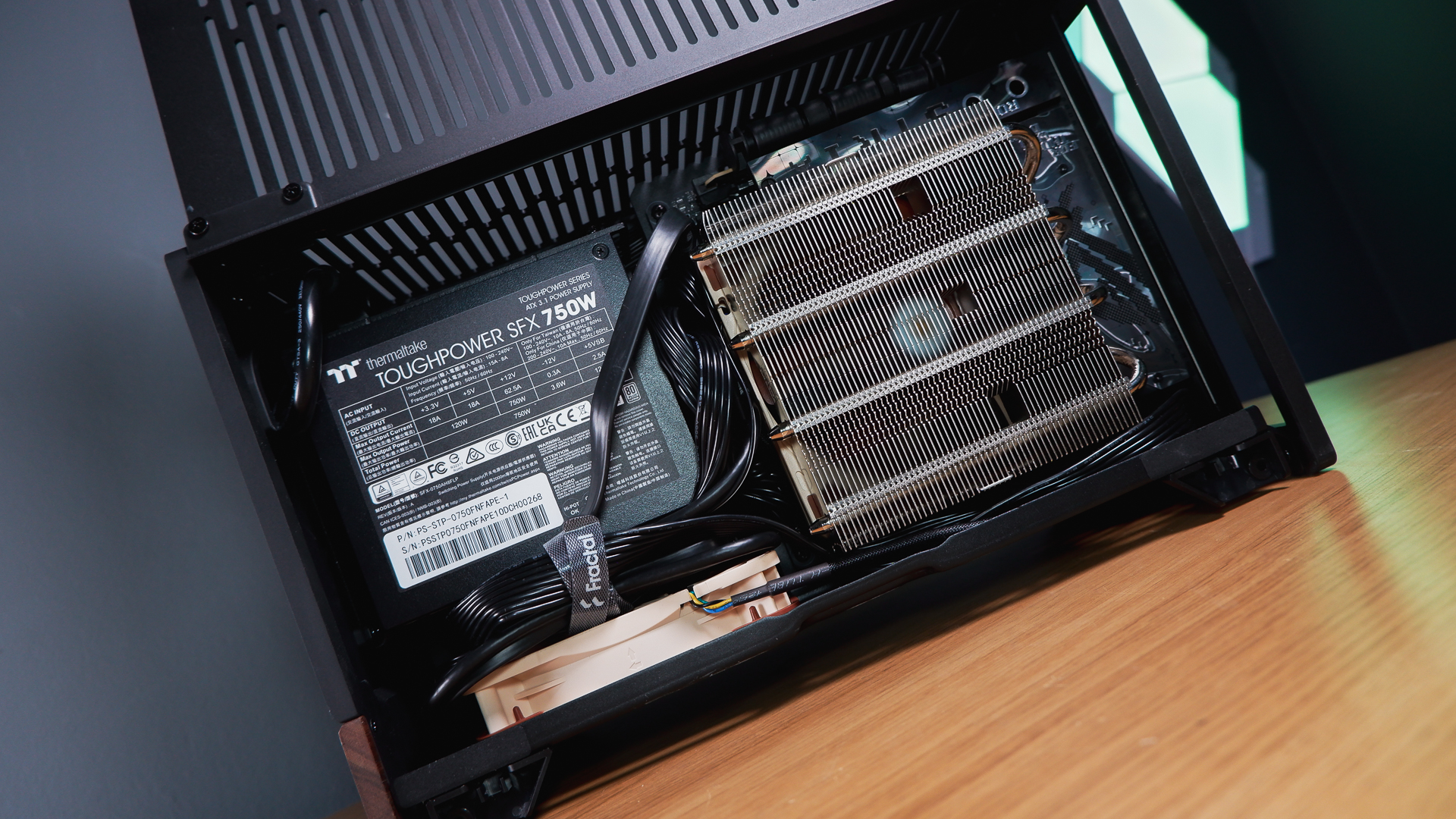
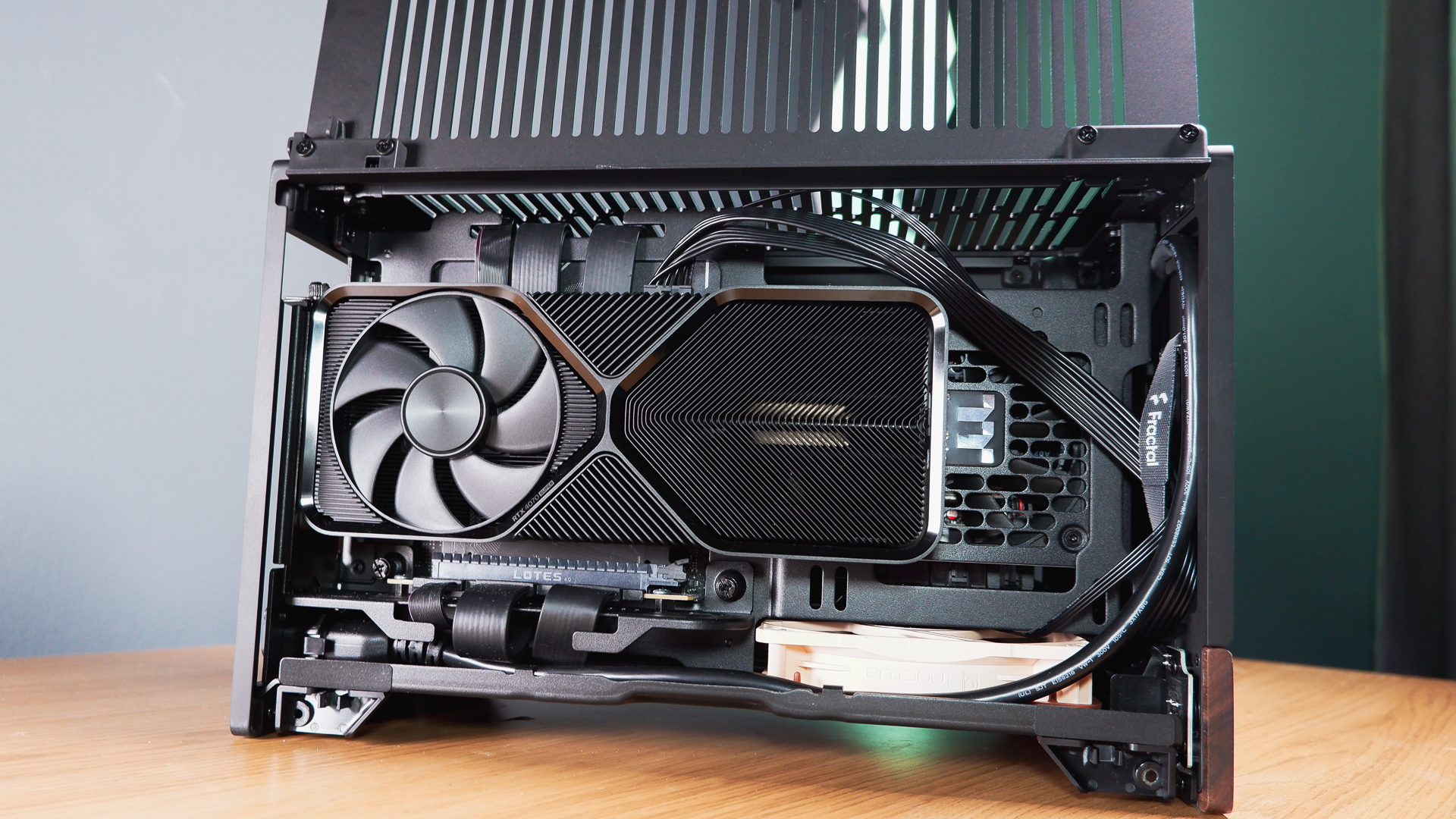
✅ You want a case to sit beside you on a desk: The Terra looks as smart as it is small. It would fit on most moderately sized desks, and might even look a little paltry on a considerably sized one.
✅ You want a small PC with a big GPU: You want the world, huh? Well, you can have it with the Terra, at least within reason. A GPU up to 322 mm in length and reasonably thick, too. Though if you go overboard, you'll have to ditch your CPU cooler. Not ideal.
❌ You have a full-size PSU to use: The Terra only takes SFX power supplies. Thankfully they make them in sizes all the way up to… damn… 1300 W/1200 W.
❌ You want to use a power-hungry CPU: The 9700X with a 65 W TDP was a good choice with the limitation on CPU cooler height. If you want a larger cooler, or even liquid cooling, you might want to look to other Mini-ITX options.
The extra fan isn't a requirement but my temperatures were better than you'd expect from a cramped build such as this. I'd chalk up some of that to the extra air whizzing around the case. Both side panels are vented across most of the surface area for a little more breathing room and there's technically space for a tiny 120 mm radiator, though it requires massively cutting down to a low-end GPU. It's just not that usable for most.
The PSU is connected to the rear power port via an extension cable. The on/off switch on the PSU is therefore unaccessible without opening the case. Though, like I've mentioned already, that's as easy as lifting the side panel up and hitting the switch. The problem is not a problem.
Installing the GPU was about as easy as any PC build. The chassis comes with a PCIe 4.0 riser pre-installed, which only needs to be plugged into the motherboard and left in-situ on the GPU side. It's a pretty normal GPU installation from there, providing you have the room. There's plenty length at 322 mm, though width-wise you're more limited between 72 mm and 43 mm.
With a small case such as this, I was surprised how quickly it all came together. An empty husk of a chassis at one point in the afternoon, a functioning gaming PC later that very same afternoon. No fuss, no fiddly bits, and no breakdowns (the PC or myself). It's a bit of a magnet for marks in this black colourway but that's one of very few complaints I have with it. That's a tremendous badge of honour for a tiny chassis.
Oh, and did I mention this one is cute as all heck?







